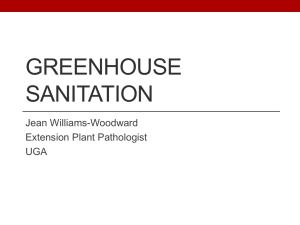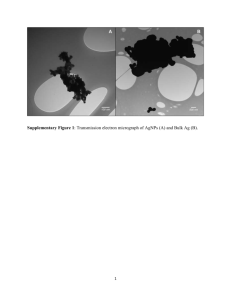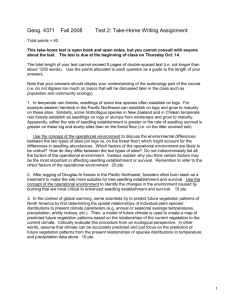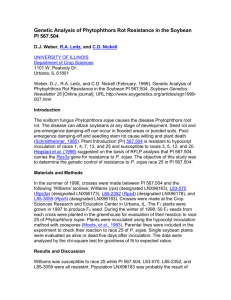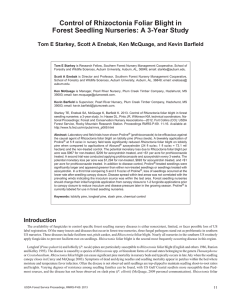Compiled by staff
advertisement
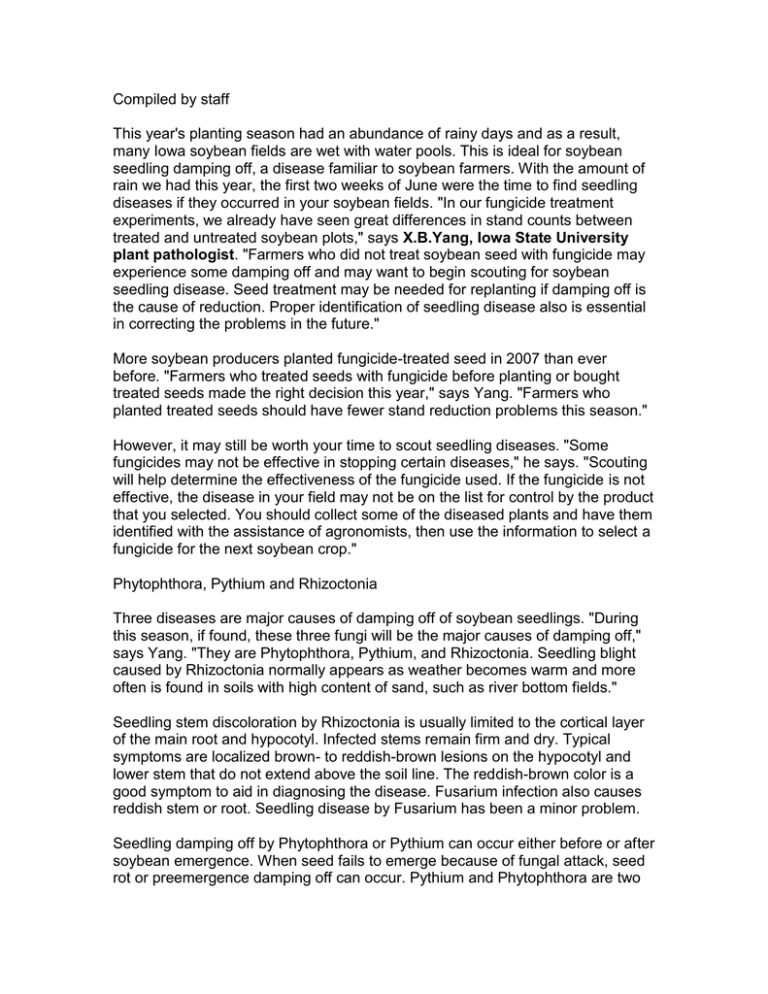
Compiled by staff This year's planting season had an abundance of rainy days and as a result, many Iowa soybean fields are wet with water pools. This is ideal for soybean seedling damping off, a disease familiar to soybean farmers. With the amount of rain we had this year, the first two weeks of June were the time to find seedling diseases if they occurred in your soybean fields. "In our fungicide treatment experiments, we already have seen great differences in stand counts between treated and untreated soybean plots," says X.B.Yang, Iowa State University plant pathologist. "Farmers who did not treat soybean seed with fungicide may experience some damping off and may want to begin scouting for soybean seedling disease. Seed treatment may be needed for replanting if damping off is the cause of reduction. Proper identification of seedling disease also is essential in correcting the problems in the future." More soybean producers planted fungicide-treated seed in 2007 than ever before. "Farmers who treated seeds with fungicide before planting or bought treated seeds made the right decision this year," says Yang. "Farmers who planted treated seeds should have fewer stand reduction problems this season." However, it may still be worth your time to scout seedling diseases. "Some fungicides may not be effective in stopping certain diseases," he says. "Scouting will help determine the effectiveness of the fungicide used. If the fungicide is not effective, the disease in your field may not be on the list for control by the product that you selected. You should collect some of the diseased plants and have them identified with the assistance of agronomists, then use the information to select a fungicide for the next soybean crop." Phytophthora, Pythium and Rhizoctonia Three diseases are major causes of damping off of soybean seedlings. "During this season, if found, these three fungi will be the major causes of damping off," says Yang. "They are Phytophthora, Pythium, and Rhizoctonia. Seedling blight caused by Rhizoctonia normally appears as weather becomes warm and more often is found in soils with high content of sand, such as river bottom fields." Seedling stem discoloration by Rhizoctonia is usually limited to the cortical layer of the main root and hypocotyl. Infected stems remain firm and dry. Typical symptoms are localized brown- to reddish-brown lesions on the hypocotyl and lower stem that do not extend above the soil line. The reddish-brown color is a good symptom to aid in diagnosing the disease. Fusarium infection also causes reddish stem or root. Seedling disease by Fusarium has been a minor problem. Seedling damping off by Phytophthora or Pythium can occur either before or after soybean emergence. When seed fails to emerge because of fungal attack, seed rot or preemergence damping off can occur. Pythium and Phytophthora are two fungi causing preemergence damping off in Iowa. When the fungi attack the seed before germination, seed rot occurs, he explains. Seed that is dead before germination will be soft and rotted with soil adhering to it. If infection occurs after germination, seed may fail to emerge and dead plants have a short and discolored root. If plants are killed at the seedling stage (after emergence), the disease is called seedling blight or post-emergence damping off. Diseased plants may stand singly or in small circular groups, particularly in low spots in the field, or they may occur scattered over an entire field. Soybeans are not resistant to Pythium Symptoms of seedling blight by Pythium is very similar to that by Phytophthora. You normally cannot separate the two without further laboratory tests, he says. If seed treatments are used, there is no need to distinguish them as fungicides effective to one also will be effective to the other. However, soybeans are bred for resistance only to Phytophthora, not to Pythium. To growers who use resistance as a means to control damping off, identifying Phytophthora is critical. When seedling blight occurs, dead seedlings are visible on the ground. Infected plants dead before true leaf stage have a rotted appearance, he says. If leaves are present, the leaves of infected seedlings first will have a gray-green color before turning brown. A few days later, the plants die and have a rotted appearance. Diseased plants are easily pulled from soil because of rotted roots. Seedling blight by Phytophthora can be differentiated from Pythium after V2 growth stage or later, says Yang. Plants infected by Phytophthora have a brown discoloration extending from root up the stem. Beans planted in cold, wet soil are most likely to be attacked by Pythium. If disease occurs in warm conditions, it's more likely caused by Phytophthora. In this planting season, both Pythium and Phytophthora can be active.


